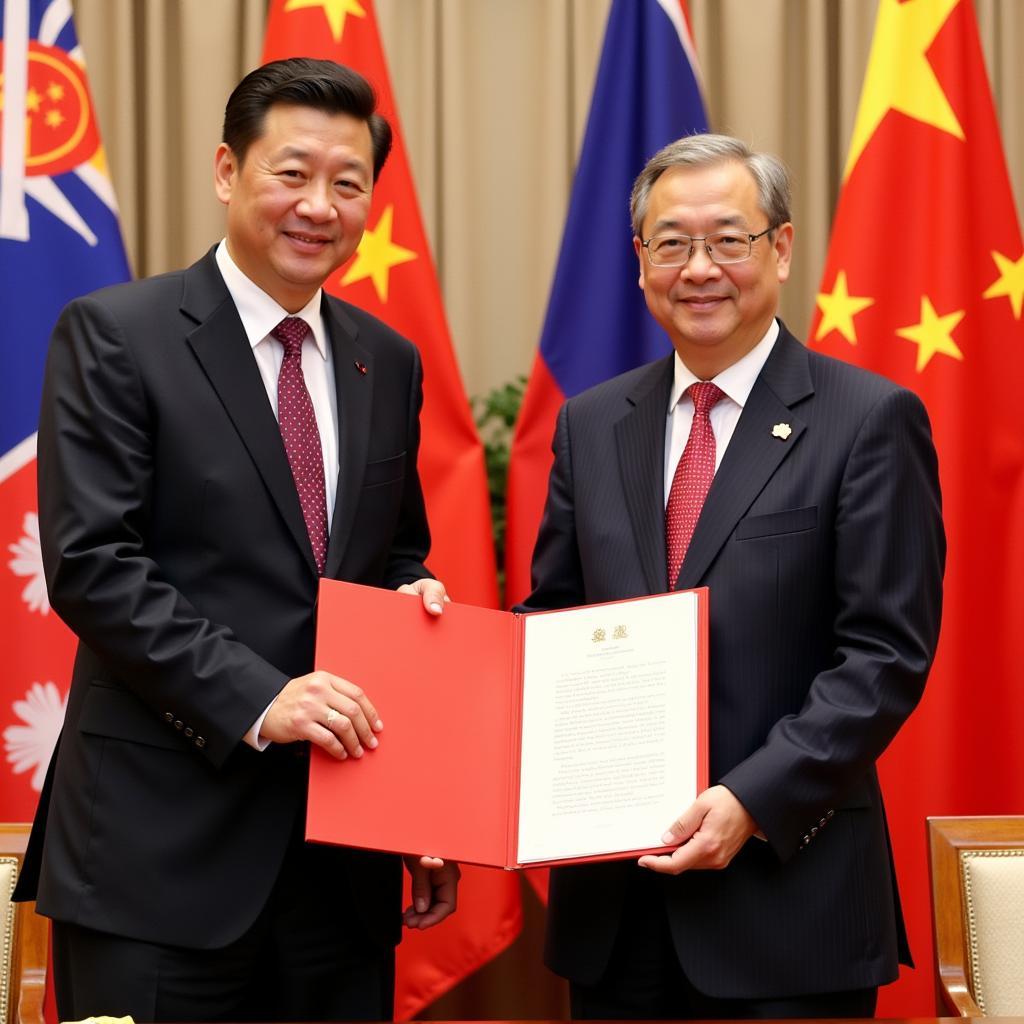The 2002 China-asean Declaration Of Conduct (DOC) stands as a pivotal document shaping the complex geopolitical landscape of the South China Sea. Signed by China and the ten member states of ASEAN, the DOC outlines a framework for managing maritime disputes and promoting cooperation in the region. This article delves into the core principles of the DOC, its historical context, and its enduring relevance in contemporary international relations.
Understanding the Genesis of the DOC
The late 20th century witnessed rising tensions in the South China Sea as multiple countries asserted overlapping claims over various islands, reefs, and their surrounding waters. These disputes, rooted in historical interpretations, resource competition, and strategic calculations, threatened regional stability and economic prosperity.
Against this backdrop, ASEAN sought to engage China in a constructive dialogue to address these maritime challenges. This effort culminated in the signing of the DOC in 2002.
 Signing Ceremony of the DOC
Signing Ceremony of the DOC
Core Principles of the 2002 China-ASEAN Declaration of Conduct
The DOC is founded on a set of key principles designed to guide the conduct of states with overlapping claims in the South China Sea. These include:
- Peaceful Resolution of Disputes: The DOC underscores the commitment of all signatory states to resolve their territorial and jurisdictional disputes peacefully, without resorting to the use of force or coercion.
- Self-Restraint: The declaration calls upon all parties to exercise self-restraint in their activities in the South China Sea. This includes refraining from actions that could complicate or escalate tensions, such as militarizing disputed features.
- Cooperation in Maritime Activities: The DOC encourages China and ASEAN to cooperate in various areas of maritime activity, including marine environmental protection, scientific research, search and rescue, and safety of navigation.
- Confidence-Building Measures: Recognizing the importance of trust and transparency, the DOC promotes the implementation of confidence-building measures among the signatory states. This includes dialogues, exchanges of information, and joint exercises.
The DOC’s Enduring Significance
Despite its non-binding nature, the DOC represents a significant milestone in regional diplomacy. It provides a framework for dialogue and cooperation between China and ASEAN on critical maritime issues.
While the DOC has contributed to a degree of stability in the South China Sea, challenges remain. Implementation of the declaration has been uneven, and disagreements persist over its interpretation and enforcement.
Looking Ahead: The Code of Conduct Negotiations
To address these limitations and build upon the foundation laid by the DOC, China and ASEAN have been engaged in negotiations for a more comprehensive and legally binding Code of Conduct (COC). The COC aims to establish a rules-based framework for managing maritime activities and resolving disputes in the South China Sea.
However, the path to a substantive COC is fraught with complexities. Negotiating parties continue to grapple with issues such as the geographic scope of the agreement, dispute settlement mechanisms, and the role of external actors.
Conclusion
The 2002 China-ASEAN Declaration of Conduct remains a pivotal instrument for managing tensions and fostering cooperation in the South China Sea. Despite its limitations, the DOC serves as a testament to the commitment of China and ASEAN to pursue peaceful solutions to complex maritime disputes. As negotiations for a Code of Conduct continue, the principles enshrined in the DOC will continue to guide efforts towards building a more stable and prosperous region.
